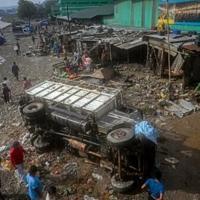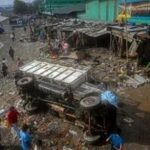After monsoon floods in Nepal killed at least 198 people, search and rescue teams scoured through destroyed homes in the capital city. Deadly floods and landslides are a common occurrence in South Asia during the monsoon season, but experts have noted that climate change is exacerbating the situation.
The recent heavy rains in Kathmandu caused widespread flooding and landslides, with entire neighborhoods submerged and the capital temporarily isolated from the rest of Nepal due to blocked highways. The Nepal Police reported 198 deaths and 26 missing persons as a result of the disaster.
Efforts are underway to clear blocked roads and rescue stranded individuals, with bulldozers being used to remove debris. The UN has also stepped in to provide relief aid, citing urgent needs for safe water and temporary shelter for those affected by the floods.
While the extreme rainfall is abnormal and likely linked to climate change, the unplanned urban development around rivers like the Bagmati River has worsened the impact of disasters like this. The monsoon season is crucial for agriculture and food production in the region, but the heavy rains also bring considerable destruction and loss of life.
It’s clear that urgent action is needed to address both the immediate aftermath of the disaster and the underlying issues of climate change and urban development that contribute to these devastating events.





